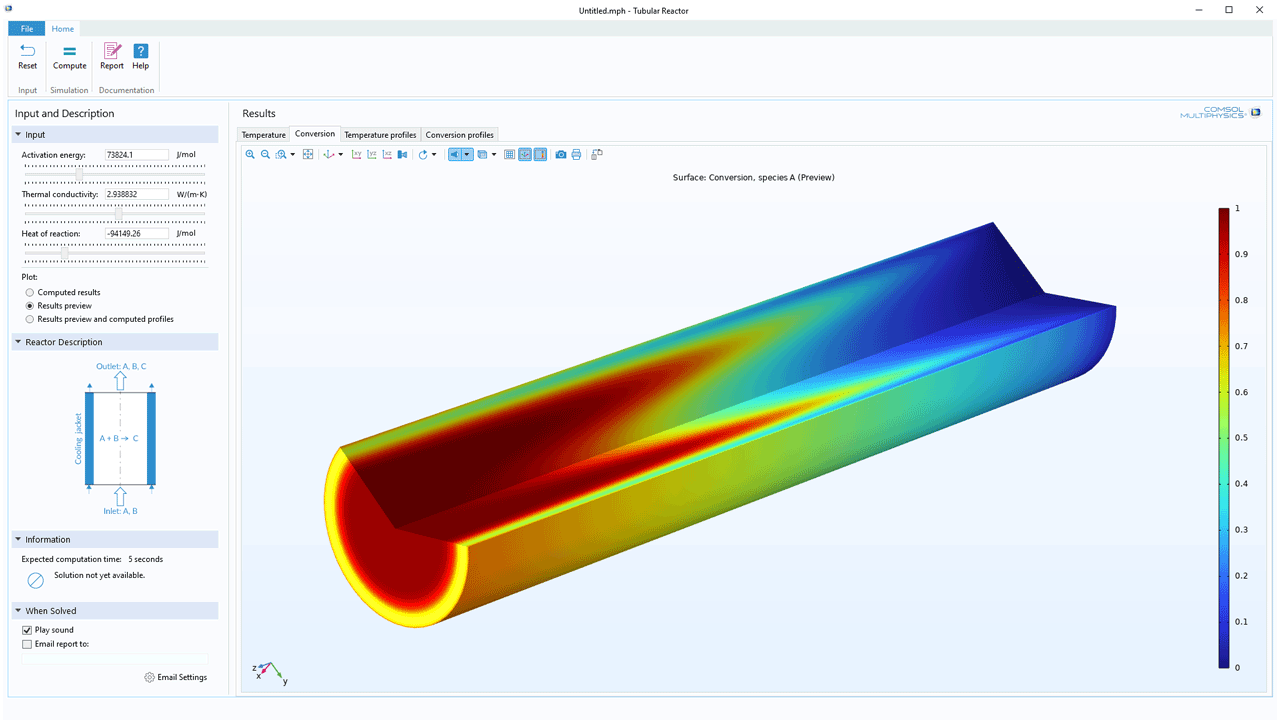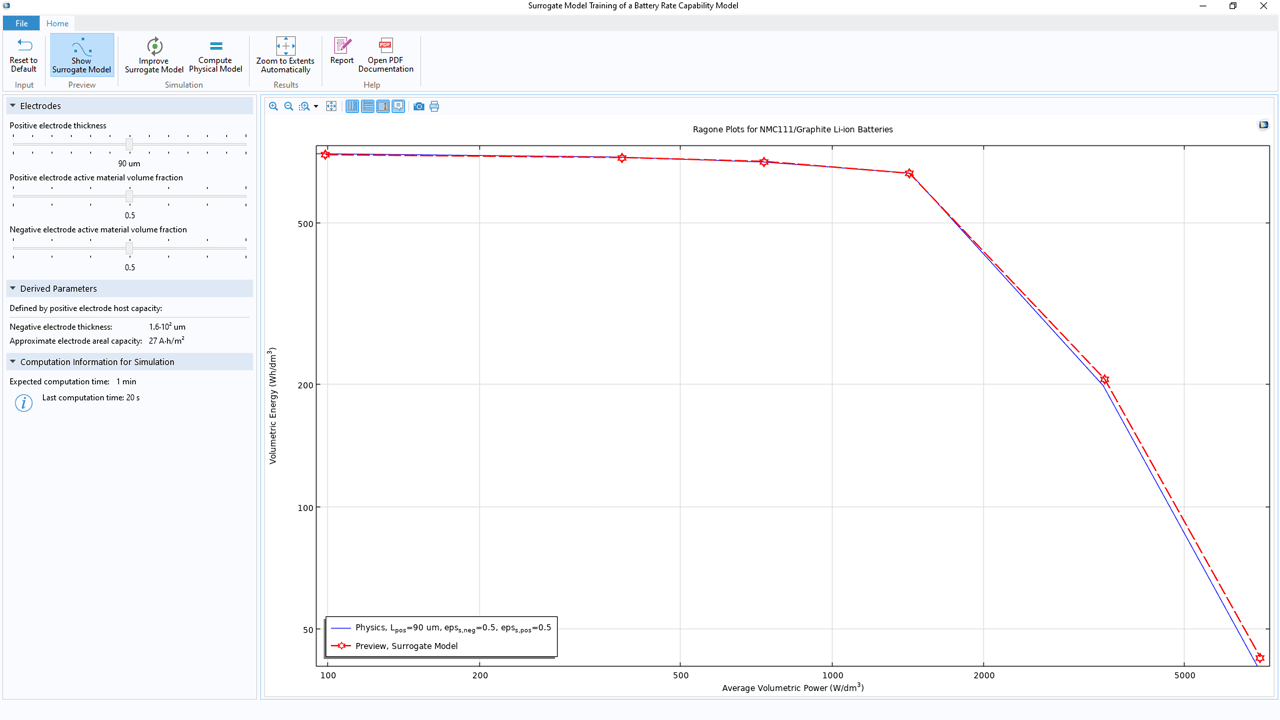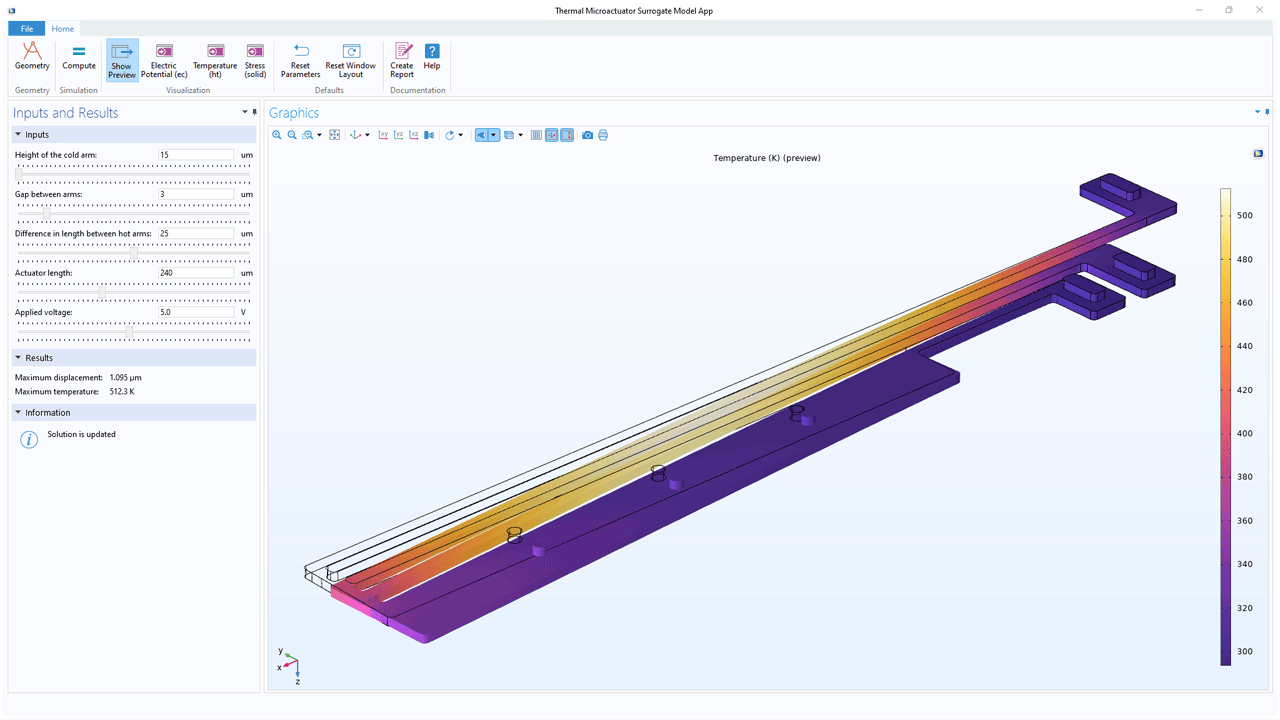support@comsol.com
Surrogate Models
COMSOL Multiphysics® version 6.2 introduces powerful new functionality for creating and using surrogate models. This functionality is available through solvers based on design of experiments (DOE) as well as function definitions. The computational speed of an app can be greatly increased by using a surrogate model instead of a full-fledged finite element model. A surrogate model is a simpler, usually computationally less expensive model that is used to approximate the behavior of a more complex, and often more computationally expensive, model. The faster model evaluation offered by a surrogate model provides the app user with a more interactive experience and makes it easier to spread the use of simulation throughout an organization.The Surrogate Model Training Study
A surrogate model is created by training on a large dataset produced using the new Surrogate Model Training study. When training surrogate models, it is advantageous to use strategic DOE sampling methods, like Latin hypercube sampling (LHS), over conventional methods such as random or uniform grid sampling. LHS, which is used by the Surrogate Model Training study, efficiently spans the input space without excessive amounts of computations. While the accuracy of surrogate models improves with more data points, there is a balance between the time spent on data generation and the required model accuracy.
Surrogate Model Functions
The Surrogate Model Training study can be used for data generation, and it also provides options for automated surrogate model training following any data generation. The surrogate models are available as functions under the Global Definitions node. Different surrogate models come with their own sets of capabilities and limitations, making it essential to select one that fits the application's requirements and constraints. Included with COMSOL Multiphysics® is the Deep Neural Network (DNN) surrogate model. The Uncertainty Quantification Module additionally offers the Gaussian Process (GP) and Polynomial Chaos Expansion (PCE) surrogate models. The GP and PCE surrogate models include uncertainty estimates in regard to the quality of the data fit, whereas the DNN model does not give any uncertainty estimates. The benefit of the DNN model is that it can handle larger datasets than the GP and PCE models. The Uncertainty Quantification Module includes additional specialized studies and analysis functionality for the GP and PCE surrogate models.
Multidimensional Function Interpolation and Approximation
The surrogate models can be used for general multidimensional function interpolation and approximation and can handle an arbitrary number of inputs and outputs. In addition, the surrogate models are well suited for handling complex nonlinear relationships in the data. The use of surrogate model functions is not limited to apps and uncertainty quantification but can also be used to represent material data, for optimization, and more. Note that the surrogate model functions can be differentiated multiple times with respect to any of the input parameters.
New Applications
COMSOL Multiphysics® version 6.2 introduces the following example applications.
Tubular Reactor Surrogate Model

There are two versions of this app available for download:
- Download from the Application Gallery
- Download from the Application Gallery
(With Efficient Geometry Sampling)
Thermal Actuator Surrogate Model
Surrogate Model Training of a Battery Rate Capability Model*

Download from the Application Gallery
*Requires the Battery Design Module

